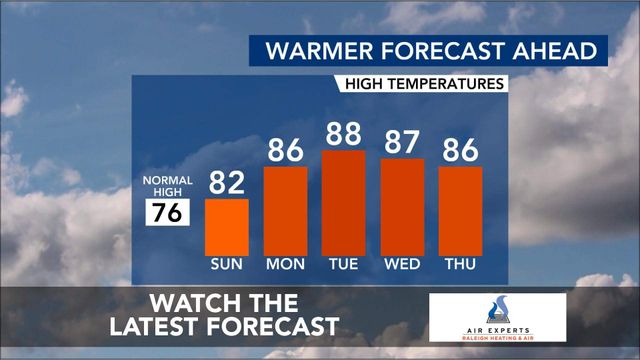No Holiday Rainfall Feast

Our four-day Thanksgiving Holiday weekend brought some significant weather variations, with the passage of a cold front from the west late Thursday and Thursday night, followed by the approach of a warm front from the south on Sunday. Both systems brought cloud cover and some rain, but the amounts involved were not very helpful in the context of the exceptional drought status that has crept back into place over central North Carolina. At the RDU airport, no rain was recorded on Thansgiving Day, although a few sprinkles were noted around the area and some measurable, but meager rainfall did occur over the western Piedmont and parts of the coastal plain that day. Measurable rain was more widespread as we closed out the long weekend on Sunday, but it too was very limited, with six hundredths of an inch at RDU and similar amounts across the better part of our viewing area. A couple of lucky spots near Durham and Wilson managed 1-2 tenths of an inch, but that was about it for significant rain. I think back on Thursday I saw about ten drops on my windshield traveling back and forth to Rocky Mount for a meal with family there!
We have had drizzle and a few clusters of more notable shower activity as of noon today, though still on a hit and miss basis, but there is a surface low on track to pass by to our west later today, and we'll also see a cold front pass through tonight in conjunction with an upper level disturbance passing by to our northwest. That combination still holds some potential for decent rainfall this evening, and while amounts could be quite variable, somewhere between one quarter and three quarters of an inch appears possible for many of us. One fly in the ointment may be a large area of very intense showers and thunderstorms that's been active down toward the Gulf Coast. On occasion, those interrupt the deep feed of moisture flowing toward North Carolina and the lift applied to moisture that does reach the area, acting to limit rainfall coverage and amounts. Once that front passes later tonight, it appears we're in for a return to mainly dry conditions for the remainder of the week, with just a slim chance of a sprinkle Wednesday night or early Thursday morning.
The other tricky parts of today's forecast are the erosion of a shallow layer of cool air trapped over the Sandhills and Piedmont, and how our high temperatures will react to that erosion, and then the possibility for some strong or severe thunderstorms this evening ahead of the approaching cold front. A lot of us have stayed in the 40s to around 50 through midday, but as shown in the temperature and dewpoint analysis from a computer model for the Raleigh area valid at 7 am today (first image above), the temperature about 1500-2000 feet off the ground was already in the low 60s earlier this morning! The timing is always difficult on how these shallow "cold air damming" situations erode and warmer air either moves in or mixes down from above, leading to what we like to call "high bust potential" temperature forecasts. It appears for now, though, that after a cool day overall, many of us will warm into the upper 60s and low 70s late this afternoon or evening.
Finally, as the front approaches this evening there is a potential for some thunderstorms to develop, and there are some aspects of the developing pattern that could be supportive of severe weather, mainly in the form of strong wind gusts but also with a slight chance of tornado formation. The elements supporting this are a fairly strong cold front, an upper level jet streak just to our northwest, and very strong winds and wind shear through the lower and middle atmosphere (see the forecast computer model sounding for 7 pm, with winds near the surface from the south-southwest around 10-15 knots, but around 80 knots at 20,000 feet, and with a turning from SSW to SW through the lowest few thousand feet above the surface that can be conducive to forming supercell thunderstorms). Working against the potential for severe weather is the time of day (mainly after sunset) and an expected lack of strong instability, especially from around the I-95 area west. Farther east over the coastal plain, the first elements may be a little weaker, but the instability should be greater, and for that reason the Storm Prediction Center has easternmost parts of the state in a "Slight Risk" for severe weather, as seen in the final image above.









